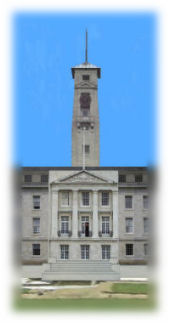Spatial Literacy in Teaching
These pages contain details of some of the activities of the University of Nottingham arm of the Spatial Literacy in Teaching (SPLINT) Centre of Excellence in Teaching and Learning (CETL), which is a joint initiative of the University of Leicester, The University of Nottingham and University College London. This website provides fast delivery of resources and information on a variety of technical information, teaching, research and outreach activities under development at Nottingham. For further details and other activities elsewhere in the centre, please visit the main SPLINT website www.splint-cetl.ac.uk [more].
The SPLINT Collaboration
SPLINT is a £3.9 million HEFCE-funded Centre for Excellence in Teaching and Learning (CETL) collaborative project between the University of Leicester (lead), the University of Nottingham and University College London. The focus of SPLINT is on the pedagogy of geospatial technologies; the pedagogy of taught postgraduates and the enhancement of spatial literacy in higher education.
SPLINT at Nottingham
The Nottingham component of SPLINT is run jointly by the School of Geography and the Institute of Engineering Surveying and Space Geodesy (IESSG). The focus of activity at Nottingham is on building technologies and resources to enhance spatial literacy in student learning, in particular the use of 3D visualisation and location-aware mobile computing. Techniques under development will initially be deployed on GIS modules, including the MSc in GIS, quickly followed by engineering modules, other geography modules and then into other disciplines and to different levels of learners.







